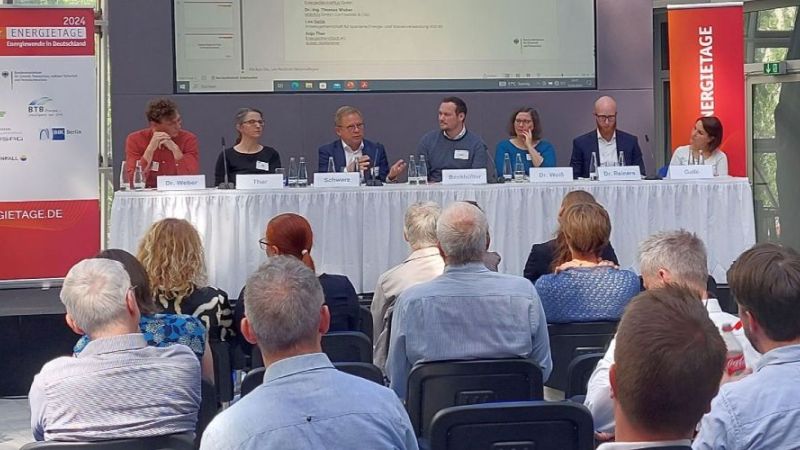 © HZB
© HZB
Photovoltaics
Perovskite/silicon tandem solar cells on the way from the laboratory to production
A cluster facility set up at Helmholtz-Zentrum Berlin (HZB) enables wafers with perovskite/silicon tandem solar cells to be produced in a vacuum; sufficiently large to replicate industrial production. This globally unique plant helps to develop new close-to-industry processes, materials and solar cells.
With a share of 92 per cent, silicon solar cells dominate the photovoltaic market worldwide. Currently, industrially produced cells achieve efficiencies of between 22 and 24 per cent. This value can only be further increased by very complex technical processes. In addition, the theoretically and technically feasible maximum is around 26 to 27 per cent. So it is time to look for more mass-market alternatives to achieve lower electricity generation costs. So-called tandem solar cells are a promising technology. These consist of two stacked solar cells made of different semiconductor materials, for example metal halide perovskite and silicon.
Perovskite tandem solar cells: promising technology on the roadmap for photovoltaics of the future
Since 2008, the material class of "metal halide perovskites", or perovskites for short, has become the focus of many scientists. These semiconductor compounds can be ideally combined with silicon solar cells to form tandem cells. The perovskite solar cell primarily converts the short-wave light and the silicon cell the long-wave light in the red and near-infrared range into power. These materials therefore complement each other and together can use the light spectrum more efficiently. They can be produced relatively easily and inexpensively using various processes, for example wet-chemical or, as in this case, with a vacuum evaporation system. Perovskite tandem cells could therefore be very well suited for a future mass market and the replacement of silicon cells.
Within just a few years, perovskite tandem cells have succeeded in increasing efficiency significantly above that of silicon cells. In November 2021, teams of scientists from HZB achieved an officially certified world record value of 29.8 per cent with a completely in-house produced laboratory cell. This shows that the 30 per cent mark is within reach.
New coating plant ready for close-to-industry research
The aim of the teams of scientists in the Koala and Koala+ projects is to close the gap between research and industry. To this end, they have set up a new plant technology to develop and manufacture industrial-scale perovskite/silicon tandem solar cells with an initial efficiency of 26 per cent. The worldwide unique vacuum evaporation plant (technologically implemented with the industrial partners: Von Ardenne and MBraun/CreaPhys) simultaneously vapour-deposits the perovskite absorber layer consisting of different materials from four or more sources homogeneously and over the entire surface of silicon wafers. All other contact layers are developed in separate process chambers. What is special: All processes run fully automatically and reproducibly within the plant - without vacuum breakage. In addition, the cluster plant allows tandem solar cells to be manufactured on production-standard wafer sizes, thus scaling the processes from laboratory to industrial scale. This gives manufacturers the unique opportunity to develop tandem cells together with the HZB using industry-like methods and processes, based on silicon (bottom) cells.
"Tandem solar cells with perovskites are currently the most attractive technology available for the future mass photovoltaic market. Until that time comes, further investigations must be carried out to advance knowledge, particularly with regard to the scalability, stability and environmental compatibility of perovskites", says Professor Bernd Stannowski, who heads the Koala Project HZB. "Perovskites are very sensitive to high temperatures, humidity and UV radiation. In addition, the perovskites that can be used for tandem cells contain small amounts of toxic lead, which must not be released into the environment", Stannowski explains further. For this purpose, the modules must be safely encapsulated and appropriate recycling processes must be developed. Intensive research work on this is underway at HZB.
Together with the existing reference lines for silicon heterojunction and CIGS solar cells at the Photovoltaics Competence Centre (PVcomB), HZB now has another facility to develop large-area tandem solar cells and transfer the technology to industry. (mm)










